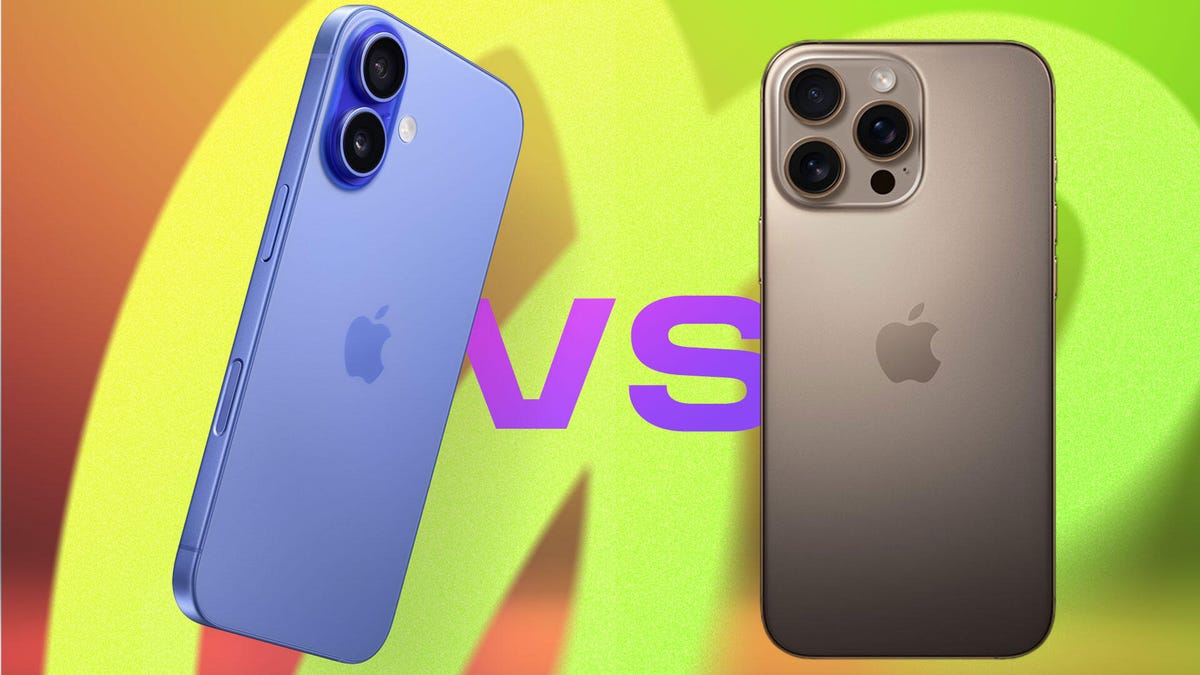At its September 2024 Glowtime event, Apple unveiled its latest lineup of iPhone 16 handsets. These phones share a lot of new features, with the biggest differences being in size and the division between standard and premium phones. While the iPhone 16E released in 2025 corners the affordable market, the biggest iPhone 16 models remain the priciest, and there's plenty to differentiate them. Here's the iPhone 16 Plus versus the iPhone 16 Pro Max comparison.
The most prominent distinction between the two bigger phones is size, as they're no longer tied for the title of largest iPhone on record. The iPhone 16 Plus still has a 6.7-inch display, but the iPhone 16 Pro Max has a 6.9-inch display, giving it the crown for the biggest iPhone ever made.
That decision has knock-on effects: everything the iPhone 16 Plus is, the iPhone 16 Pro Max does a little better. That comes at a literal price, with the iPhone 16 Plus with 128GB of storage starting at $899 (£899, AU$1,599) and the iPhone 16 Pro Max with 256GB of storage starting at $1,199 (£1,199, AU$2,149).
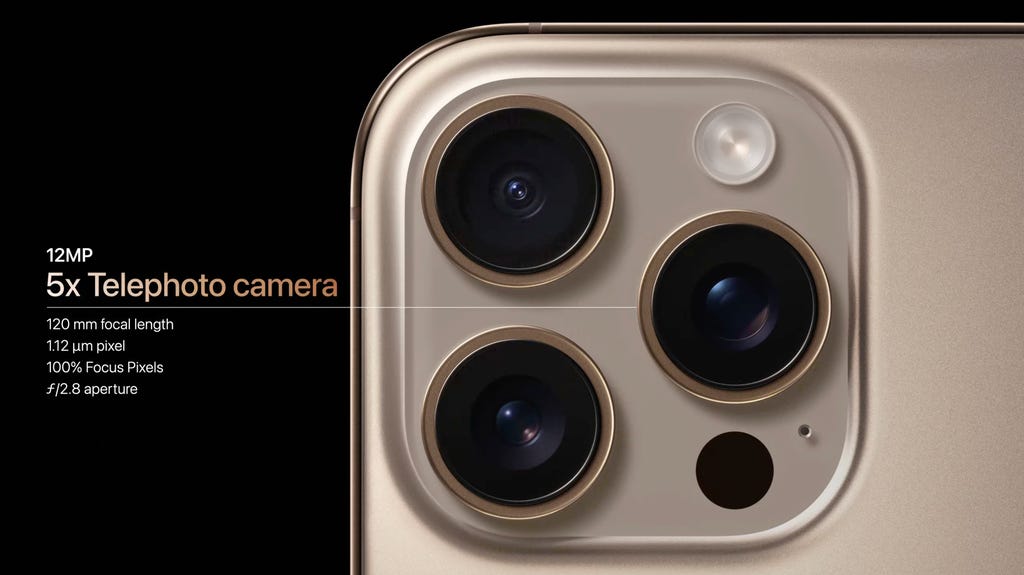
A highlight of the 5x optical telephoto in the iPhone 16 Pro Max during the Apple Glowtime event. Apple/Screenshot by James Martin/CNET
That's a sizable price gulf between the two, but there are a handful of things the even bigger phone packs that its now-smaller sibling doesn't. The iPhone 16 Plus has a 48-megapixel fusion camera (with a neat new 12-megapixel 2x digital zoom feature) and 48-megapixel ultrawide camera; the iPhone 16 Pro Max has that and a 12-megapixel telephoto camera with 5x optical zoom. Both phones have a 12-megapixel TrueDepth front-facing camera for selfies and FaceID.
The Pro Max also has a higher video ceiling, recording 4K video at 120 frames per second, which is good for converting to slow motion; the Plus tops out at 4K video with 60 frames per second. Both phones can shoot Spatial Video, the depth-focused format of videos watchable only in Apple Vision Pro, at 1080p at 30 frames per second.
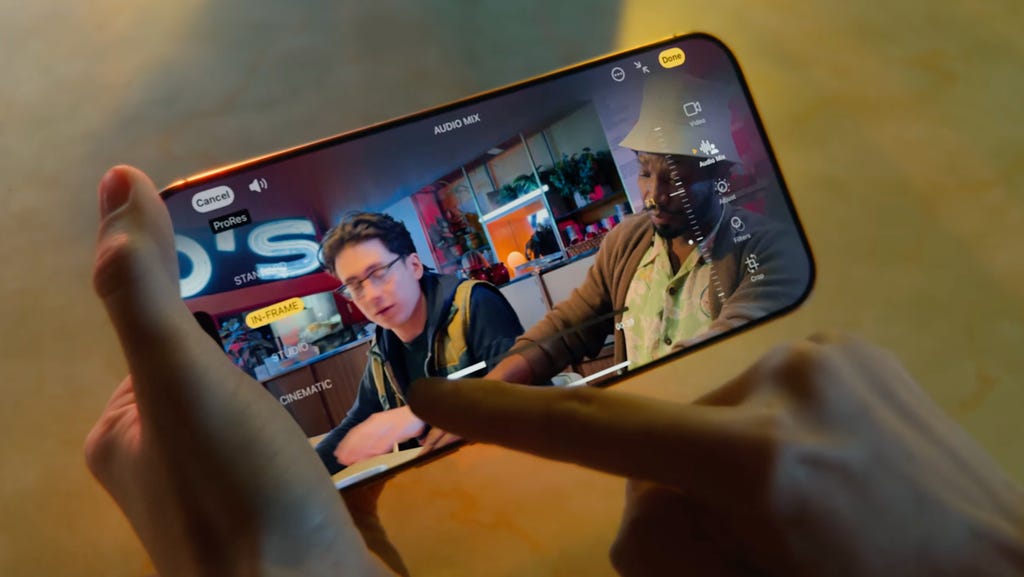
A moment showing the three Audio Mix options available for recording video. Apple/Screenshot by James Martin/CNET
What the Pro Max does have over its cheaper sibling is more sensitive audio recording thanks to its four microphones over the Plus's 3. Both phones get Audio Mix, a trio of professional toggles to direct the phone to record certain sound sources over others when recording a video: in-frame captures who's speaking in front of the camera (even if people nearby are speaking off-camera), studio is built for podcasters and vloggers to make them sound like they're nestled in the sound-damped walls of a studio and cinematic combines sounds toward the front of the screen (much like a standard movie mix).
Unsurprisingly, the iPhone 16 Pro Max has a more advanced A18 Pro chipset than the iPhone 16 Plus's A18 silicon, though both support Apple Intelligence. The bigger phone has more maximum storage with 256GB, 512GB and 1TB options, while the Plus has 128GB, 256GB and 512GB configurations. Apple has not released the RAM on each model.
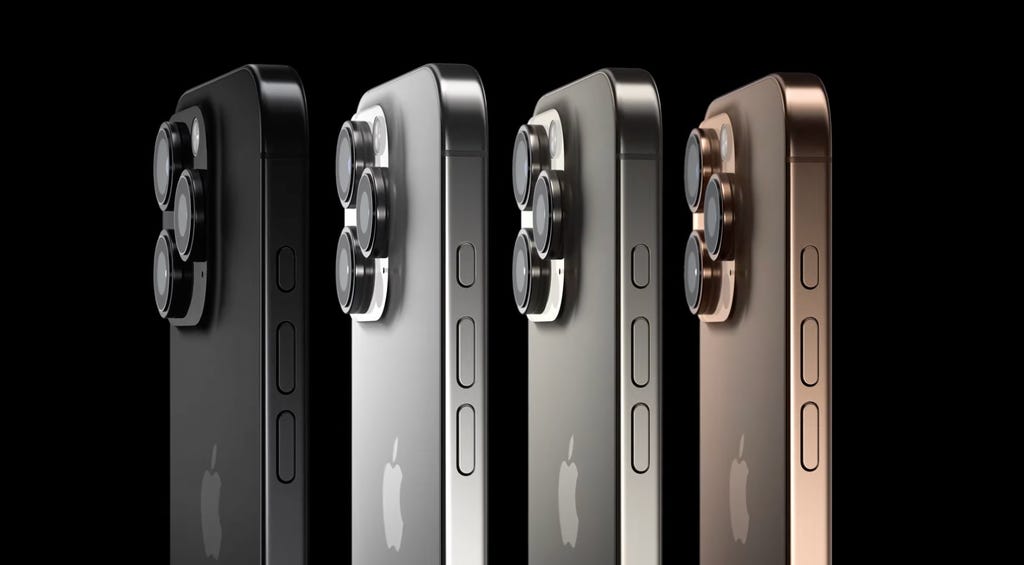
Colors of the iPhone 16 Pro Max. Apple/Screenshot by James Martin/CNET
Where the Plus is 6.33x3.06x0.31 inches (160.9x77.8x7.8mm), the Pro Max is 6.42x3.06x0.32 inches (163x77.6x8.25mm). That also means the smaller phone is lighter at 199 grams (7.03 ounces), while the bigger handset is 227 grams (7.99 ounces). The Pro Max comes in a titanium frame with four colors: black, white, a silver-ish natural and a tan desert hue. The Plus has a more vibrant range of colors: black, white, pink, teal and ultramarine. Both phones are IP68 rated for dust and water resistance, and both pack USB-C ports.
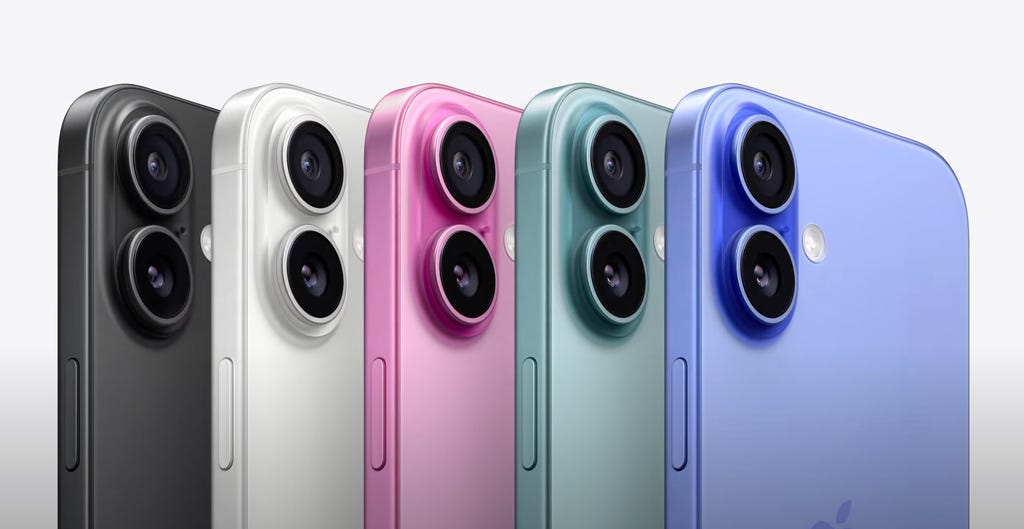
Colors of the iPhone 16 Plus. Apple/Screenshot by James Martin/CNET
Both phones' displays have OLED Super Retina XDR and 460 pixels-per-inch resolution, so they're equally as sharp, though the larger Pro Max logically has more pixels in its screen (2,868x1,320-pixel resolution) than the relatively smaller Plus (2,796x1,290-pixel resolution). The big difference is in display refresh rate, with the Pro Max topping out at 120 Hz with its ProMotion tech while the Plus retains the 60 Hz refresh rate that base iPhones have had for years. Both phones max out at 2,000 nits of brightness in direct sunlight, but they can dip down to a single nit in darkness, which helps preserve battery.
That extra space means more battery life (though in typical Apple fashion, we don't have rough hourly usage rather than exact capacity figures). The iPhone 16 Pro Max tops out at up to 33 hours of video playback (or up to 29 hours if streaming the video), while the iPhone 16 Plus has up to 27 hours of video playback (or up to 24 hours if streaming it). Both phones have the same wired charging (up to 20 watt) as the previous generation, though MagSafe wireless charging has been bumped up to 25 watts if using a 30-watt or faster charger.
Both phones run iOS 18 out of the box, and both will get Apple Intelligence when it drops later in September. Apple didn't reveal much more about its AI capabilities than was shown off at WWDC back in June. The generative AI will supercharge Siri, offer suggestions for spiffing up the tone of a message, automatically arrange your photos and offer more accurate contextual searches among them.
Apple's also added AI-generated emoji, which you can whip up by submitting prompts -- say, a cowboy frog on a diving board.
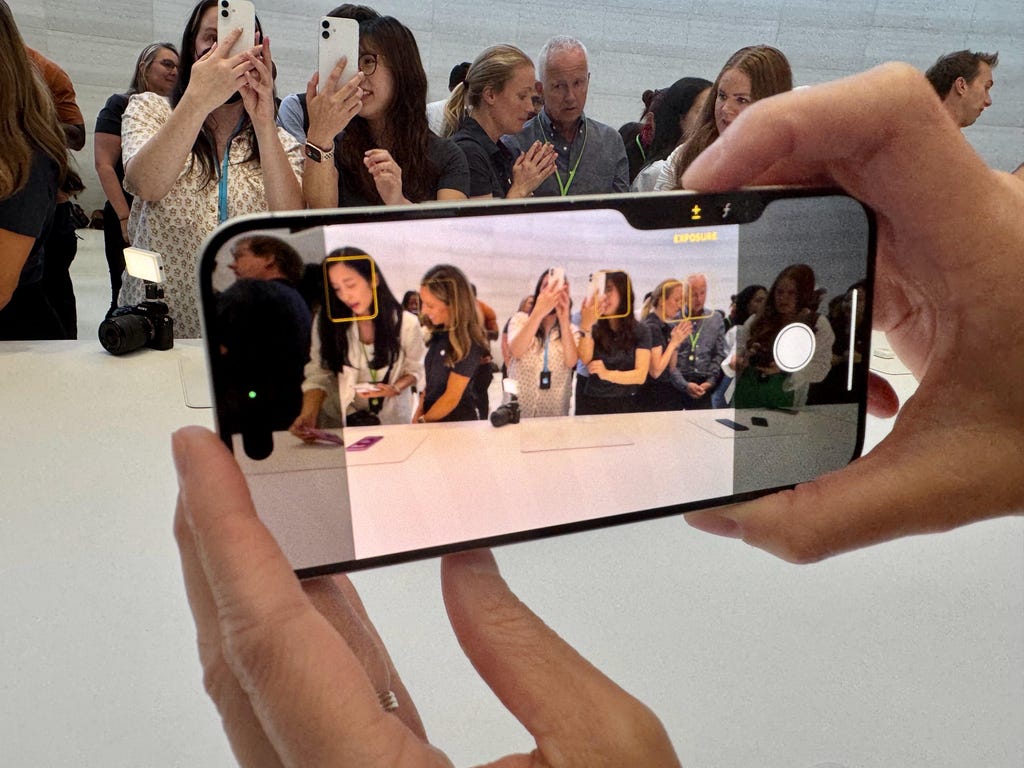
The iPhone 16's Camera Control "button" lets you launch the camera without touching the screen. Lisa Eadicicco/CNET
The big reveal is Visual Intelligence, which sees Apple's AI applied to the camera. Visual Intelligence is able to search for whatever is in your viewfinder. This is summoned with a new hardware feature: the Camera Control button, which is found on both phones on the right side below the lock button. It's capacitive and physically clicky, so you'll be able to push in for Visual Intelligence or tap it to bring up its second functionality: acting as an extra camera setting toggle.
For example, when your camera app is open, you can run your finger along it to zoom in and out or change the aperture -- and it'll work as an extra menu within third-party apps, too. The Apple presentation showed it functioning in Snap.
Similarly, the Action Button is now on both the premium and standard phones, taking the place of the ringer-silent switch to act as a customizable app shortcut. It's no longer exclusive to the premium handsets.
That shrinks the number of exclusives that the Pro Max holds over the Plus, making its $300 price differential harder to justify. True, it's larger, with a third rear camera (telephoto), titanium frame and bigger battery. But with Apple Intelligence coming to both phones (it's only drifting back to the iPhone 15 Pro and Pro Max models), the premium phones are harder to justify over their cheaper siblings.
For a more detailed comparison, check our specs sheet below:
iPhone 16 Plus vs. iPhone 16 Pro Max Apple iPhone 16 PlusApple iPhone 16 Pro MaxDisplay size, tech, resolution, refresh rate, brightness 6.7-inch OLED Super Retina XDR display; 2,796 x 1,290 pixel resolution6.9-inch OLED Super Retina XDR display; 2,868 x 1,320 pixel resolutionPixel density 460 ppi460 ppiDimensions (inches) 6.33 x 3.06 x 0.31 inches6.42 x 3.06 x 0.32 inchesDimensions (millimeters) 160.9 x 77.8 x 7.8mm163 x 77.6 x 8.25mmWeight (grams, ounces) 199 g, 7.03 oz227 g, 7.99ozMobile software iOS 18iOS 18Camera 48-megapixel (fusion), 12-megapixel (ultrawide)48-megapixel (fusion), 48-megapixel (ultrawide), 5x telephoto Front-facing camera 12-megapixel12-megapixelVideo capture 4K at 60fps; spatial video at 1080p at 30fps4K up to 120fps; spatial video at 1080p at 30fpsProcessor A18A18 ProRAM/storage 128GB, 256GB, 512GB256GB, 512GB, 1TBExpandable storage NoNoBattery Up to 27 hours video playback; up to 24 hours video playback (streamed). 20W wired charging. MagSafe wireless charging up to 25W with 30W adapter or higher; Qi2 up to 15WUp to 33 hours video playback; up to 29 hours video playback (streamed). 20W wired charging. MagSafe wireless charging up to 25W with 30W adapter or higher; Qi2 up to 15WFingerprint sensor None (Face ID)None (Face ID)Connector USB-CUSB-CHeadphone jack NoNoSpecial features Apple Intelligence, Action button, Camera Control button, Dynamic Island, 1 to 2,000 nits display brightness range, IP68 resistance. Colors: black, white, pink, teal, ultramarine. Apple Intelligence, Action button, Camera Control button, 4x audio mics, Dynamic Island, 1 to 2,000 nits display brightness range, IP68 resistance. Colors: black titanium, white titantium, natural titanium, desert titanium.US price off-contract $899 (128GB), $899 (256GB), $1,199 (512GB)$1,199 (256GB), $1,399 (512GB), $1,599 (1TB)UK price £899 (128GB), £999 (256GB), £1,199 (512GB)£1,199 (256GB), £1,399 (512GB), £1,599 (1TB)Australia price AU$1,599 (128GB), AU$1,799 (256GB), AU$2,149 (512GB)AU$2,149 (256GB), AU$2,499 (512GB), AU$2,849 (1TB)


